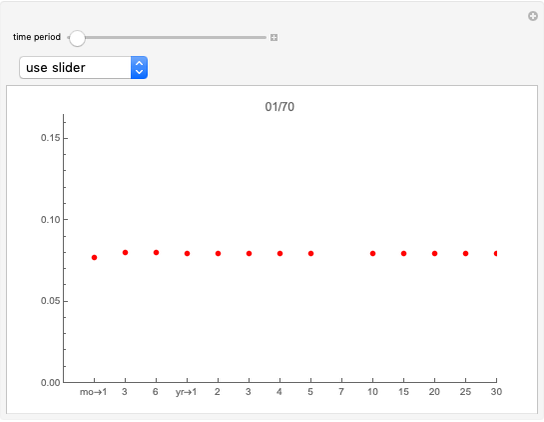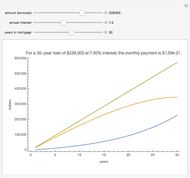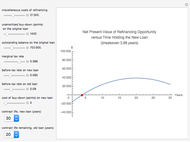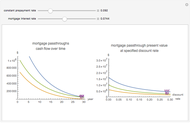True Cost of Variable Rate Mortgage Funds

Requires a Wolfram Notebook System
Interact on desktop, mobile and cloud with the free Wolfram Player or other Wolfram Language products.
Regulation Z, the result of the Federal Truth in Lending Act, was promulgated in 1968. Subpart B, among other things, covers rules for calculating annual percentage rates, commonly referred to as APR. At that time lending was predominately done with fixed interest rates. Unfortunately, the artificial assumption that the loan will be outstanding for its full term means that the APR disclosure is usually inaccurate even in the fixed rate case. When variable rates are involved, reality diverges farther from APR. This Demonstration shows how connecting the computation to the actual term produces a more accurate true cost of funds (TCF), even if rates are variable.
Contributed by: Roger J. Brown and Tom Compton (February 2013)
Open content licensed under CC BY-NC-SA
Snapshots
Details
In addition to the early repayment issue, the introduction of variable interest rate financing completely confounds the APR calculation. Since the interest rate cannot be known in advance, APR is computed as if the loan is fixed. Note the unusual circumstances required to make the TCF — APR cost difference negative (when the true cost of funds is less than the APR).
The Demonstration lets you select from two popular variable rate mortgage schemes, the 5/1 ARM or the 7/1 ARM, having an initial fixed period of five or seven years, respectively. Interest rate variation may also be modeled using two different probability distributions, each with user-controlled upper and lower parameter bounds. This does not suggest that interest rates are distributed in either of these ways, only that the way rates are distributed affects the true cost of funds.
Reference
[1] R. J. Brown, "The Ugly Truth about Truth in Lending," The Real Estate Finance Journal, forthcoming.
Permanent Citation
"True Cost of Variable Rate Mortgage Funds"
http://demonstrations.wolfram.com/TrueCostOfVariableRateMortgageFunds/
Wolfram Demonstrations Project
Published: February 20 2013

















